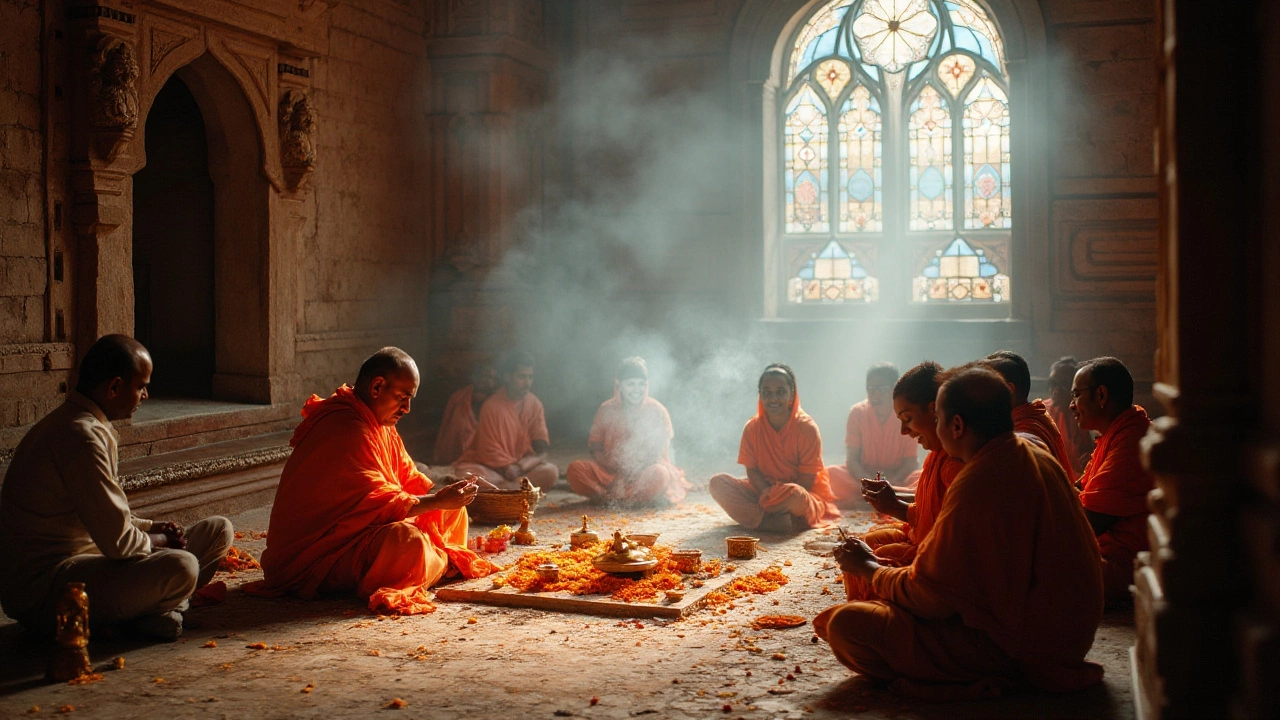Sacred Rituals: Meaning, Practices, and Modern Relevance
When we talk about sacred rituals, formal or informal actions performed to honor a divine presence, mark a life event, or maintain cultural continuity. Also known as holy rites, they blend symbolism, prayer, and community participation, creating a bridge between the material and the spiritual. In India, these practices shape daily life, festivals, and personal milestones, acting as a living archive of belief and tradition.
Key Forms that Define the Landscape
One of the most recognizable Diwali rituals, the lighting of lamps, exchange of sweets, and communal prayers performed during the Festival of Lights illustrate how a single festival can host multiple layers of meaning. The puja, a structured worship ceremony that includes offerings, chanting, and fire (homa) to invoke deities is a core component of those celebrations, requiring specific items like incense, flowers, and a clean altar. Alongside puja, the aarti, a ritual of waving lighted lamps before a deity while singing devotional songs adds a visual climax that reinforces communal devotion. Both puja and aarti often rely on mantras, sacred sound patterns repeated to focus the mind and invoke divine energy, which serve as the linguistic backbone of the ceremony, shaping its rhythm and intention.
These entities interlock in clear ways: sacred rituals encompass Diwali rituals, puja requires mantras, and an aarti often follows a puja to seal the worship. The attributes of each practice matter—puja’s typical attributes include a set of offerings (fruit, flowers, and rice), a prescribed sequence (invocation, main offering, concluding prayers), and a designated space (home altar or temple). Mantras carry attributes like language (Sanskrit or regional dialect), syllable count, and vibrational purpose (protection, prosperity, healing). Aarti’s attributes focus on the lamp’s flame, timing (usually at dusk), and accompanying bhajans (devotional songs). By mapping these attributes, readers can see how the whole system works, from the macro‑level festival down to the micro‑level chant.
Why does this matter today? Modern Indians often blend tradition with convenience—online puja services, digital mantra apps, and livestreamed aarti ceremonies. These adaptations preserve the core attributes while meeting contemporary needs. Understanding the underlying structure helps you participate meaningfully, whether you’re lighting a candle at home, joining a virtual puja, or learning a mantra for personal meditation. The posts below dive deeper into each facet, from the science behind mantra vibration to practical tips for hosting a respectful Diwali puja. Ready to see how these timeless practices fit into today’s world? Browse the collection to discover detailed guides, cultural insights, and actionable advice that bring sacred rituals into your everyday life.
